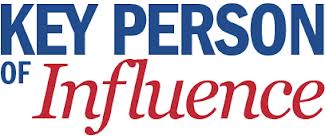
Our bodies are one amazing piece of machinery, full of pistons, levers, engines, structures and mechanisms that are designed to work in unison to do one thing: move. However, in the past half a century, with the rise of the service industry, our society has become increasingly sedentary, and people now spend 8 to 12 hours a day in a sitting position: at work, on public transport, and at home.
And this has a huge effect on our bodies. Below are a list of the most common symptoms, and some quick ways to assess yourself.
1. HUNCHED UPPER BODY
It is very common for desk workers to sit in a hunched position in front of the computer. It takes only 15mins for a muscle to start to shorten. So you can just imagine how tight your muscles get over the years! Most people that I assess have tightness in the upper chest and shoulders, in the biceps and forearms, and in the neck muscles. These cause people’s shoulders to hunch forward and their upper spine to round, leaving the muscles in the upper back overstretched and weak. This rounded posture has a name: the “Upper Cross Syndrome”.
Tightness around the neck, back and shoulders can lead to Repetitive Strain Injuries in the wrists and arms, or even shoulder or neck pains. To quickly assess your own posture: stand against a wall, with your feet together, and heels, buttocks, upper back and head touching the wall. Take a few deep breaths and relax. Ask a colleague to look at your alignment: the top of your shoulders should be in line with your earlobes and your shoulders should be at the same height.
2. WEAK CORE/TIGHT LOWER BACK
In a sitting position, our bodies are supported in a relaxed position; therefore the core muscles that are designed to support it become underactive and weak. Many people associate the 6-pack muscles with Core, however they are only a superficial muscle. Our bodies contain 4 layers of abdominal muscles, the most important of which is the deep Tranversus Abdominus (TA), a sheet of muscle going around the spine and organs, acting as a protective corset to support them during movement. However, through years of inactivity, many people have a weak TA muscle, poor core coordination, and an overactive and tight lower back.
To learn to engage your TA muscle: lie on your back with your knees bent at 90 degrees and feet on the floor. Inhale and push your belly button out, then exhale and draw your belly button in as far as you can, while keeping your lower back flat on the floor. Hold the bottom position for 10s, and then relax. Repeat the exercise 10 times each time. You may need to hold your breath at first, but with practice you will be able to breathe and add movement to the exercise. You will also be able to engage the TA muscles while exercising, walking or sitting at your desk.
3. WEAK GLUTES
Being sat down on our butts all day does have dire consequences for said butts. Indeed our bum muscles (glutes) are held in an overstretched position. Over time, this leads to weakness in the muscle, a lack of control, and in some case complete lack of activity.
Now, the glutes are very important: they are the biggest and strongest muscle in our bodies, and are designed to power our movements, protect our lower back, and to stabilize our trunk and leg muscles. They also assist the muscles of the upper thigh to absorb any impact on the knees. Poor glute strength can therefore be a huge cause of weakness and lack of stability in the knees.
To find out if your glutes are working correctly: lie on your back, with your knees bent at 90 degrees, your feet flat on the floor and your knees in line with your hips. Then lift your hips off the floor 15 times. Allow your body to use whichever muscles it wants. After a few reps check which muscles are working. If your glutes are firing correctly, you should feel them activating automatically. However for many people, the lower back or hamstrings will do all or most of the lifting. And even if your glutes are working, they probably still need strengthening. We all do.
4. TIGHT HIPS
In a sitting position, the muscles in the front of your thighs, ie. Quadriceps, Hip flexors, and IT bands (running down the side of your thighs from hip to knee) get very tight. Most people’s hips are in fact screamingly tight, from lack of activity, and from being placed day after day in an unnatural and cramped position.
To assess your hip flexibility: lie on your back with both legs straight. Pick up your right knee and pull it with both hands into your chest. If your extended leg pops up as your bent knee approaches your chest, you have tight hip flexors.
5. EXCESSIVE LOWER BACK CURVE
Through a combination of the above points many people develop what is called the “Lower Cross Syndrome”. Indeed, tight muscles in the lower back start pulling the back of the pelvis up, while tight hips pull the front of the pelvis down, leading to an anterior pelvic tilt and an excessive lower back curve.
An easy way to assess the curve in your lower back is to return to the postural assessment against the wall described in point 1., then to check how much space there is between your lower back and the wall. There should be just enough space to place your hand. If the space is wider, you have an excessive curve in the lower spine, most likely due to a combination of tight and weak muscles around the area.
To correct this, stretch your hips and lower back as often as you can, and strengthen your core and glute muscles. You can also do the following exercise daily: lie on your back, with your knees bent at 90 degrees, your feet flat on the floor and your knees in line with your hips. Tilt your pelvis forwards so that your lower back is pressed into the floor. Teach your body to hold that position for 2mins. Once you can do that easily, add some knee raises by bringing your knees (still bent at 90 degrees) into your chest, separately at first and then both knees at once when you are strong enough. Your main focus should remain your lower back: if you are unable to do the exercise without curving the lower back, regress to an easier version.
Regardless of how much you train, you must be aware of the effects of too much sitting. And regardless of your training goal, part of exercising should be to correct any tightness or weaknesses mentioned in the above paragraphs. Developing an awareness of the way you sit (and how much) are the first steps towards avoiding any injury or strain. Understanding that we are designed to move will lead to a healthy and active lifestyle. So get moving!
Will Pike – September 2012

 RSS Feed
RSS Feed



























